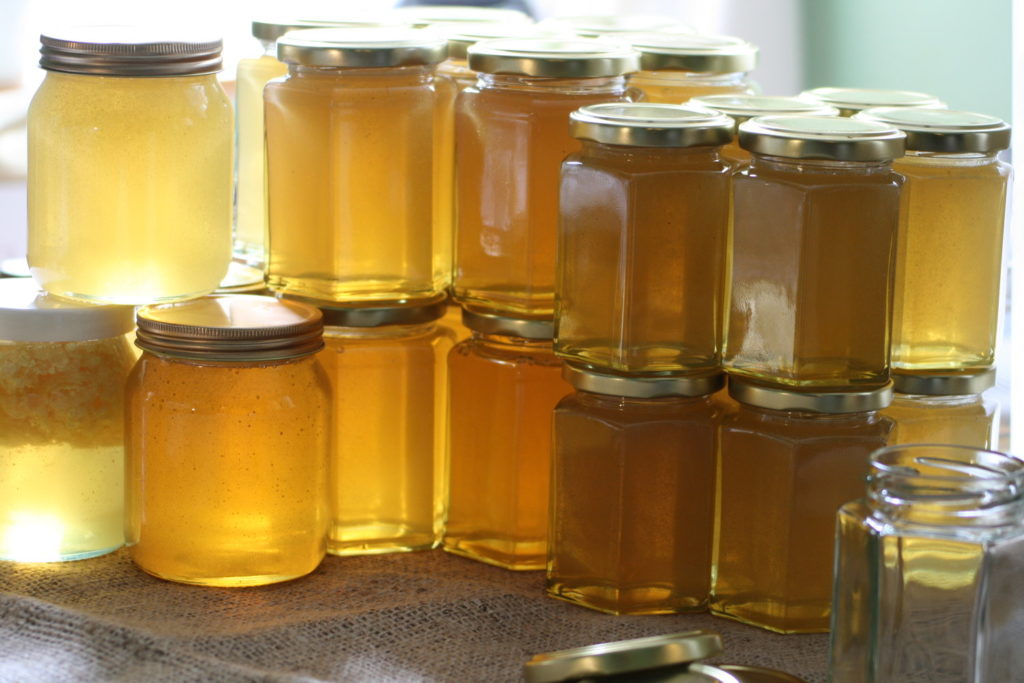How to Store Honey at Home

Storing honey can be tricky, leaving both beekeepers and customers confused about the best ways to store their honey at home. Many people believe that crystallization, also known as sugaring, indicates that the honey has gone bad. In fact, one of the most common searches on Google about honey crystallization asks if honey should be thrown out once it reaches this stage.
Another common myth is that if your honey crystallizes, it means that it has been mixed with table sugar or is in some other way contaminated. Paradoxically, the truth is that if honey stays in a liquid state too long, that is the telltale sign that your honey is no longer, or possibly never was, good. I, Matthew Davies, am going to share with you a few ways that you can preserve and store your honey for years to come.
Capping
Properly cured honey contains approximately 18% water. Since the nectar starts at about 80%, this can prove to be quite a daunting task. If we were honeybees, we could add an enzyme to the nectar and fan it with our wings until the optimal water content is achieved. Once the proper moisture content is reached, we would seal the top with a small layer of beeswax. This is nature’s way of preserving honey until it is needed. If you think about it, this process is not that much different than our canning process. Although our purpose is to get germs, not moisture, out of our canned food, a similar result of long-lasting food is the end goal.
A capped honeycomb has excellent keeping qualities. It can be stored at room temperature for several years without degrading. You only need to keep it in a clean, dry place. However, depending on the source of the nectar, the capped honeycomb may still crystalize.
Understanding Crystallization
Crystallization is a natural process. Some will ask, then why does all honey not crystallize? The reason is that it depends on the sugar makeup of the nectar. To better understand this, I need to explain the process.
Nectar contains several different types of sugar. The main ones are sucrose, glucose, and fructose. When the bees collect the honey, they immediately add an enzyme called invertase. This enzyme breaks down all the different sugars into glucose and fructose. The proportions of glucose and fructose will vary from one honey to another and their proportions change over time.
Honey, with a high level of glucose, will crystallize much faster than honey with a high level of fructose. Therefore, honey that starts with 60% glucose and 30% fructose, may end up with 65% glucose and 35% fructose. If another honey were made up of 30% glucose and 60% fructose to begin with, the result of the final product would be quite different.
While commercial honey does its best to standardize this process, there is no guaranteed way to prevent honey from crystallizing over time. If you see a best before date on honey, that is simply the manufacturer’s best guess of when it should not crystallize before. Of course, that is under ideal conditions. The conditions in your home may vary.
Keep it Liquid
To slow the crystallization process, it’s best to keep the honey at room temperature. To stop crystallization all together, you can freeze your honey. Note, however, that you should never store your honey in a refrigerator. This will only speed up the process of crystallization. Finally, adding heat to your honey, no matter how little, will jeopardize the integrity of the product and should be avoided at all costs.
In addition to all of the rules above, you are going to want to store your honey in a dark place. This can be in a cabinet or pantry. In either case, preventing the honey from seeing the light will prolong the flavor and aroma components. Because it is very acidic, honey is best stored in a glass, ceramic, or stainless-steel container. Storing it in either regular steel or plastic can cause the honey to absorb the metal or plastic taste and compromise the flavor.
Creamed Honey
Another way to prolong the life of your honey is to make creamed honey. The process creates a delicious spread for your morning toast or biscuits. Additionally, you will be able to use this creamed honey the same way you use your regular honey. The process was patented in 1935 and prolonged the shelf life of honey without crystallization.
Conclusion
Finally, if you find that your honey has crystallized, you can run it under some very hot tap water for a few minutes to loosen it up. Give it a stir, then run some more hot tap water on it. Before long, your honey will be useable again. However, once this has been done, make sure to use it quickly, because you have reduced the shelf life. Honey is excellent to have around the house. It tastes great on sandwiches, in desserts, and on vegetables, and is also an excellent replacement for sugar. Since it is an unprocessed, natural sugar, it is much better for people trying to cut sugar out of their lives. I, Matthew, Davies, hope that you have learned a few things from this blog so that you can properly store your and prevent crystallization.